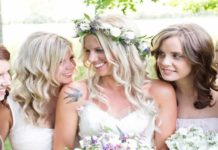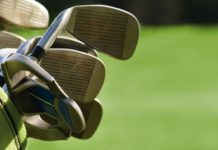Ballpark estimate: $7.50 car toll (cycling, walking, and visiting the welcome center is at no charge)
When you think of San Francisco, inevitably you’ll think of the bright orange glow of the Golden Gate Bridge. (Incidentally, a crew of 25 painters add a coat of this luminescent orange color every week to keep the shade bright and fresh.) The bridge is a landmark that you see in most pictures of this “City by the Bay.” But in addition to being a lovely icon to represent the city, the Golden Gate Bridge also serves a very practical purpose, linking the City of San Francisco to the counties that sit to the northern part of the state.
The Allure of San Francisco
The hilly terrain of San Francisco with its Fisherman’s Wharf, Trolley Cars, and notorious prison, has long been a draw for tourists from all of the country and also all over the world. While more than a century ago San Francisco was considered by some as the “Paris of the West,” today this eclectic city stands on its own right and draws people to experience its wealth of art and culture, as well as the explore the beauty of the historical Golden Gate Bridge.
Exploring this Destination
The Golden Gate Bridge, which features art-deco style towers that extend 746 feet and are connected by large cables, celebrated its 75th anniversary in May of 2012.
While the purpose of the bridge is to handle the flow of traffic moving in and out of San Francisco, it’s also become a major destination for tourists to the area.
As such, the bridge features some key amenities that welcome visitors and provides them with a history and overview of the region, as well as a way to experience a connection with nature and the surrounding land. In fact, today the bridge is bookmarked by a national park on each end, cementing the bridge to the communities it connects in meaningful ways.
History of the Bridge
The idea for the bridge can be traced back to 1919, when officials in San Francisco wanted to explore the concept of building a structure to span the Golden Gate Strait, which was the body of water that connected the San Francisco Bay to the Pacific Ocean. City Engineer Michael M. O’Shaughnessy came up with the initial design for the bridge. In November of 1930, a bond measure was passed to pay for the construction of this bridge and the process of building it began in 1933.
Interestingly enough, the construction bonds were repaid in full in 1971, and totaled $35 million for actual principal for the project, along with close to another $40 million for interest. All of the money was paid back by toll revenue.
Why Drive When You Can Walk or Bike?
How you experience the Golden Gate Bridge depends on where you are going and why. For locals who travel back and forth from the surrounding counties to the city proper, the bridge is the means to get to the destination and requires going through an electronic toll that is required for cars in the southbound direction. The length of the bridge spans 1.7 miles and this roadway is traveled by more than 110,000 every single day.
But driving certainly isn’t the only option. For people who come to the bridge to experience its stunning architecture and enjoy the view from the deck, you might use the passenger walking and biking lanes. Pedestrians have access on the East lane sidewalk (the side facing toward San Francisco) during specified hours, which vary depending on the time of year. Electric wheelchairs are also allowed in this lane. There is no toll for using the sidewalk.
Bikes may use both the East and West sidewalks any time of the day or night and they do not have to pay a toll. However, electric gates restrict the sidewalks in the evening and overnight so cyclists need to push a buzzer and be approved by security in order to gain access to this area after hours.
Visitors Welcome Center
For visitors who want to learn more about the bridge, it’s worth a stop at the Golden Gate Conservatory/Welcome Center. This is run by the the Golden Gate National Parks Conservancy, which is an area nonprofit, in conjunction with the National Parks Service.
The welcome center was built in honor of the Golden Gate Bridge’s recent milestone anniversary and offers a place for visitors to come and learn about the history of the region and to partake of interactive exhibits available. One of the highlights of the exhibits is a 12-foot “test model” of the Golden Gate Bridge made out of stainless steel that was built in 1933. There is no charge to enter the visitor’s center or to participate in any of the displays or activities inside. There are also free outdoor exhibits that cover engineering and structural details and provide a context for visitors to explore the dynamics of the bridge construction.
Visitors can also join a Golden Gate Bridge walking tour that meets twice a week and that covers the highlights and history of the bridge.
Cost to Cross the Golden Gate Bridge
The cost to cross the Golden Gate Bridge by car is $7.50. (For people with a FasTrak, the cost is $6.50 per crossing.) The price for 3-axel vehicles is $22.50 (or $19.50 with a FasTrak), and for 4 axels, the cost is $30 (or $26 for FasTrak access).
There is no charge for pedestrians or cyclists, and there is no charge to visit the Welcome Center or partake of any of the indoor or outdoor visits, displays, or walking groups. Entrance to the national parks on either end of the Golden Gate bridge is also free of charge, but there are museums and attractions inside the park that do come with an admission charge.
Golden Gate Bridge Souvenirs
If you want to bring home a memory of your trip to the San Francisco area, how about checking out the Golden Gate Bridge Shop. Postcards, posters, glasses, and luggage tags cost $10 or less, while T-shirts, ornaments, bags, and snow globes are in the $20 to $30 range.














































